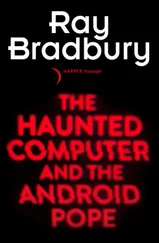In order to develop a kind of computing that would naturally serve as a tool for trying out intuitions and playing “what if” games, Joyce knew she had to build a team capable of creating software that would appeal to very young children. In fact, the programs had to be appealing before they could be educational, and as such they would require a very different approach from that taken by a program designer who wants to produce games or business tools. Joyce’s idea was to provide something that would be “whimsical and fun and engaging, that would say to kids, ‘This is a neat world—enter it, try it, play with it.’”
As for why she needed a team in the first place to handle software design and production and, in short, to make the kind of software she envisioned a reality, she explained: “I don’t have the talents to do it alone. I am not an expert programmer. I’m not a professional graphic artist. I have no musical talent whatsoever. I studied history in college, not education or child development. But I knew that if I could get people with those skills to join me and bounce an idea back and forth, we could envision our creations from our different perspectives and put our different viewpoints together in such a way that the idea would become bigger and more complete as we bounced it around.”
Such was the concept behind Joyce Hakansson Associates (JHA), which opened its doors for business in May 1982. First came the programmers and graphic artists and musicians. Then came the writers. The children, drawn from Berkeley Public schools and private preschools, joined the enterprise after the child development specialists suggested that bringing potential customers in to help them build the software from the ground up would be more effective than using the children only as a test market for the programs after they were developed. In the midst of the software gold rush, Joyce and her associates made an unusual decision: They decided to go about their business carefully. Undoubtedly, that decision was responsible for the critical acclaim from educators, parents, and computer software commentators that greeted JHA programs. But in practice it meant that their first programs would hit the market in 1984, just as the bottom dropped out of the software boom.
Together, the group decided to take the time not just to make a batch of software to throw into the home computer market but to craft the kind of truly effective educational programs they had envisioned in the first place. Like a television production company, they would create the product, then contract with the software equivalents of the networks or syndication outfits to publish and distribute it. They would become a software developer, rather than a publisher.
A typical JHA product is Ducks Ahoy!, published in 1984 by CBS Software. The setting is a brightly colored cartoon version of Venice, with canals, gondolas, piazzas, bridges, and houses in which there are quacking ducks who have the habit of hopping out doors into the canals. Children between three and six play the game, complete with animation and silly sound effects, by rising a joystick to steer a gondola through the canals, under the bridges, and alongside the ducks’ houses. The initial goal is to predict which duck will jump next, and then to move the gondola directly under it. If the duck lands in the boat, you can deposit the duck on a beach or look for another duck.
Ultimately, the object of Ducks Ahoy! is to catch and carry ten ducks to the beach, allowing as few ducks as possible to land in the water. There are obstacles, of course, and one of them is a submerged hippo that likes to capsize boats full of ducks. All in all there is real humor in the game—its characters look and sound and act funny, and this makes them fun to play with. And by the time a child has mastered the game, he or she has gained important counting, predicting, and hand-eye coordination skills. The child has also learned that a computer world can be fun and rewarding to explore.
Other JHA products include its first and highly acclaimed little game, called Alf in the Color Caves. A program for very young children, it was published by Spinnaker in January 1984. Other programs, with names like Bubble Burst, Sea Horse Hide and Seek, and Kermit’s Electronic StoryMaker were contracted for by CBS and Simon & Schuster. But most of the products that represent JHA’s first two years’ worth of effort weren’t published until early 1985. As a result, it’s still too early to judge JHA’s impact on the educational market, or even to say with certainty that this market will ever grow at even a fraction of the extraordinary rate that was initially predicted by many industry analysts and market researchers.
In fact, a full appraisal of JHA’s long-term influence on the market may never come to pass, because, unfortunately, JHA’s timing was off, and unforeseeable events began to overtake everyone in the software industry. By 1985 it didn’t matter how good one’s software was, or how much critical acclaim JHA’s or any other developer’s programs garnered in the media. The microcomputer software market was overcrowded with products, the buying public was confused, the popular media were jaded with the microcomputer phenomenon, and software publishers were going out of business. When publishers are in trouble, developers like JHA are in trouble.
In the spring of 1985, several of the software publishers that had survived the shakeout of 1984 were still feeding JHA money to develop programs, but the royalty stream Joyce and her team had anticipated when they started their enterprise was barely a trickle. People were still buying educational software, but there were many products to choose from, and the vast majority of potential buyers had no way of knowing that JHA products were superior to any one of a dozen competing programs. If the company is still in existence in the spring of 1986, Joyce Hakansson and her associates will be among the ranks of the pleasantly surprised.
What happened to the gold rush? Where did the shakeout come from? In retrospect, it is much easier to see the roots of the disaster in the midst of the boom years. The software shakeout didn’t happen all at once, nor was it caused by one simple event or situation. In order to understand what happened to developers like JHA, it is necessary to go back to the end of 1982, when the tide turned.
The fall of 1982 was an extraordinary time for Brøderbund, the Brotherhood, Apple, IBM, Softsel, Softalk, programmers, and just about everybody in the microcomputer software industry. Barely two and a half years before, my brother Gary and I had been sitting on the living room floor of our house in Eugene, Oregon, busily copying cassettes of my Galactic Empire program, hoping to produce enough of them to fill our first $300 order. In late 1982, we were operating out of a converted liquor warehouse in San Rafael, California. Our forty-five employees did the copying (and a lot of other things as well). And our sales revenues amounted to many thousands of dollars every month.
But it wasn’t just the company itself that was doing well by this time. Some of the monthly royalty checks for our top programmers were large enough to buy houses. I don’t just mean that one of those monthly royalty checks could cover a down payment; I mean that a programmer could (and often did) buy the whole house for cash on the basis of one month’s royalties. And other companies besides ours were doing even better. VisiCorp was getting very button-down. Sirius and Sierra On-Line were fighting for dominance of the computer game market, and in the November issue of Softalk magazine, On-Line even took 17¼ pages of advertising space. Little did we realize that November 1982 was the beginning of the end of the software gold rush and that an entirely new era was about to dawn on the horizon.
Читать дальше










